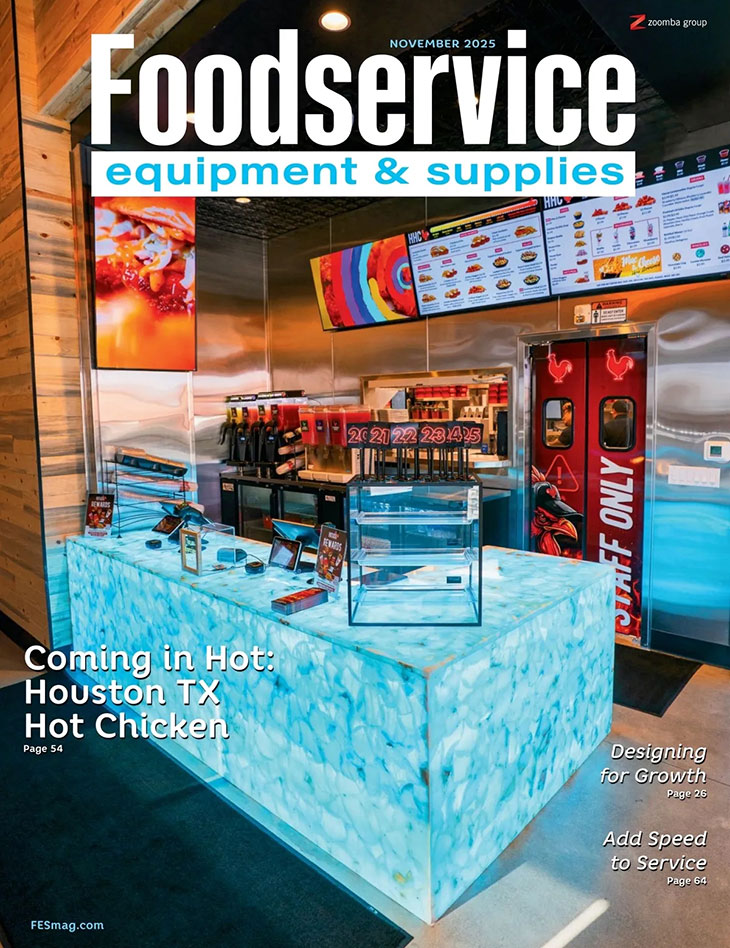Potbelly Sandwich Shop got its start in 1977 as an antique shop in Chicago's Lincoln Park neighborhood. In an attempt to boost their business, the couple who owned the shop decided to start serving lunch to their curious, collecting customers. Simple sandwiches served in such a unique atmosphere resulted in lines reaching out the door and around the corner. In 1996, Bryant Keil bought the original store and since then the restaurant chain has grown to more than 400 locations throughout the country. And just last year, Potbelly opened a location in the United Kingdom.
 Lori HaugheyWhile the company has grown, Potbelly remains true to its roots with a comfortable, casual atmosphere and an evolving and customizable menu with sandwiches as its cornerstone. Lori Haughey, vice president of operations support and culinary for Potbelly, describes Potbelly's evolution, including how its equipment package has developed and how the addition of drive-thrus shapes its business.
Lori HaugheyWhile the company has grown, Potbelly remains true to its roots with a comfortable, casual atmosphere and an evolving and customizable menu with sandwiches as its cornerstone. Lori Haughey, vice president of operations support and culinary for Potbelly, describes Potbelly's evolution, including how its equipment package has developed and how the addition of drive-thrus shapes its business.
FE&S: How has the menu at Potbelly evolved over the years?
LH: When we started in 1977 it was strictly sandwiches, and shortly thereafter we added milkshakes. Over the past few years, though, we have added different types and sizes of bread and salads. We partnered with our marketing team to understand what we were missing — where the gap in our menu is. We always try to identify what our customers are asking for and try to work a year in advance to add those items to the menu.
FE&S: Describe how the evolution of your menu has impacted Potbelly's operations.
LH: Our number one 'gotcha' point is the real estate on our line. The question becomes: How much can we accommodate new items on the line without taking away what people love about Potbelly? So our approach is: Let's keep it simple but exciting and relevant.
When it comes to adding new items, we have a few test markets where stores are in a nice little pocket, close together. This allows us to nicely test something.
FE&S: How do you maintain speed of service for today's time-starved customers?
LH: Our promise is we are going to be fast, friendly and fresh every day. Speed of service is such a big focus for us. You can have 60 people in line and we still promise we will get you through the line in 8 minutes or less. We have locations where the line will be out the door but we have built up customer confidence that we will get them through in eight minutes or less.
FE&S: How does Potbelly live up to this aspect of its brand promise?
LH: It is all about discipline. You move with urgency, first and foremost. And you have to do it right but at a decent speed. You never sacrifice staff to the point where it will force customers to walk out of that line to go somewhere else. We strive to have 110 percent staffing to make sure we have enough people to protect our peak.
FE&S: Seeing as going overboard in staffing can impact the bottom line, too, how do you strike the right balance?
LH: It goes back to protecting that peak. We might be staffed at 110 percent for only 2 hours.  Occasionally someone might get a short shift, say two or three hours on one day. But we rotate that around to be fair with everyone. All of our associates are forward facing. So being able to engage with the customer and suggest extra toppings allows you to build your check and add extra labor. We look at what those extras are that we can add during normal conversations with our customers. So it is important to have the staff to maximize the staff. But each location is very different. They are so unique in their customer base and demographics.
Occasionally someone might get a short shift, say two or three hours on one day. But we rotate that around to be fair with everyone. All of our associates are forward facing. So being able to engage with the customer and suggest extra toppings allows you to build your check and add extra labor. We look at what those extras are that we can add during normal conversations with our customers. So it is important to have the staff to maximize the staff. But each location is very different. They are so unique in their customer base and demographics.
FE&S: How has Potbelly's equipment package evolved over the years?
LH: We have always had conveyor ovens that use impingement heat. We switched to a different conveyor oven that allows us to raise the heat and lower the cooking time of a sandwich. So we went from 1 minute 40 seconds to 1 minute for a sandwich. That's a big impact. Our previous ovens were workhorses that served us well so many of them got repositioned to cook sandwiches for catering operations, delivery orders or pickup orders. We keep our in-store customers with our frontline ovens.
We also switched over to a more automated blender. You don't have to stand there and hold the cup anymore. The blender allows us to produce shakes more consistently with less labor and get it to our guests faster. And we can make two or three at a time now, too.
Inline order takers are something we've added, too. They get into the lines with a tablet to take orders to keep customers moving. We also added a video screen at the salad station to help staff remember all of the different items that go into a salad. That way, when the customer comes up to pay, their salad is ready for them.
FE&S: Why add drive-thrus after all these years?
LH: We did our first drive-thru seven or eight years ago. And in the past few years, we have really ramped this up. In fact, half of our shops we add this year will have drive-thrus. They have been very good for us. When we have an opportunity to have a drive-thru location on an end cap we jump on those opportunities.
[Drive-thrus offer] convenience and speed for our customers, particularly in the suburbs. Customers love it, they have been asking for it and we have been able to deliver on it. We already have that equipment on the backline and can deliver. You are maximizing the use of your space throughout the day.
FE&S: What lessons did you learn by adding drive-thrus?
LH: Biggest lesson we learned is to put in timers to make sure the team understands the customers' expectations for time. We also learned what information needs to print on the order stickers and they have to be easy to read so anyone can make that sandwich. Also, we learned how many people we need to staff on the backline to make that line move throughout the entire day. At 7 p.m. during the dinner hour, for example, you can't just have two people there. And you might not need as many people on the front line at that time. So you have to put your staff where your sales are.
FE&S: Labor costs are on the rise for a variety of reasons and this is something all operators will have to address. How will Potbelly look to address this moving forward?
LH: That's the big question as we look ahead to 2017. We have a team that is looking at how we can keep our labor at a reasonable rate. But we also want to keep that fresh mentality. So we have to ask "What are the things we do well but don't get credit for?"
We are always looking for aspects where we can streamline parts of our operations. For example, we slice meats, cheese, pickles and so forth daily in our restaurants. If we have to pay more to have food pre-sliced to save on labor we might consider that in the future. Or what if we had someone bake our cookies for us? We do that each day and it is a huge source of pride for us. But I can't see us having someone bake our cookies for us. Do we invest in soupliners to save the time of an employee scrubbing that soup holder? It comes down to identifying opportunities where we can streamline our operations without compromising what our customers are passionate about.
FE&S: What does the future hold for Potbelly?
LH: Staying true to our roots, first and foremost. You have to evolve and we do. We will continue to keep things exciting and hire against our values.



